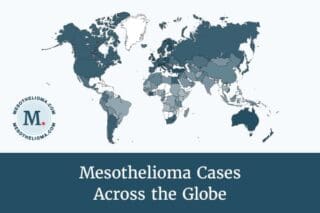
The Centers for Disease Control and Prevention (CDC) recently reported new data on mesothelioma. The report focused on deaths in U.S. women, noting they were about 25% higher in 2020 versus 1999.
CDC doctors call this a significant increase, and it may give rise to more questions than answers. Historically, women have had lower rates of mesothelioma than men. This may be because more men work in industrial and manufacturing jobs. These jobs often come with asbestos exposure risks.
If women generally experience less asbestos exposure, why did deaths increase for women with mesothelioma?
CDC Data Says More Women Died of Mesothelioma
The CDC report shows more women died of mesothelioma in 2020 versus 1999. But looking a bit further into the data reveals a twist. The rate of mesothelioma deaths for women actually dropped significantly.
In 1999, 4.83 of every million U.S. women died of mesothelioma. In 2020, 4.15 of every million U.S. women died of mesothelioma. Without taking population data into consideration, it may seem confusing that the number of deaths jumped while the death rate fell.
Population Growth Explains Drop in Mesothelioma Mortality Rate
It may seem backward that the rate of deaths dropped when the number of deaths increased. But we can illustrate the principals at play with a made-up example. Consider the following information for fake country X:
Looking at the number of deaths alone, one might say they jumped from 1 in 1999 to 5 in 2020. But accounting for population growth changes things. The death rate in 1999 was 1 in 10, but it came out to 0.5 out of 10 in 2020 because the population grew.
The same thing happened with the real-world CDC data. In 2020, the number of deaths was about 25% higher than in 1999. But the population of women grew even more than that. So the death rate actually fell by about 14%.
CDC Report Emphasizes the Need to Minimize Asbestos Exposure
According to the CDC report, these trends mean the country should keep limiting asbestos exposure. Active asbestos mines no longer exist in the United States, but some forms of the mineral are still imported. In 2021, the United States imported 100 tons of asbestos. As such, current asbestos laws have room for improvement.
In April, regulators proposed a partial asbestos ban that could be a step in the right direction. The proposed rule was originally open for public comment until mid-June. But the comment period was recently extended through July 13, 2022. Mesothelioma advocates can voice their support on the docket until then.




